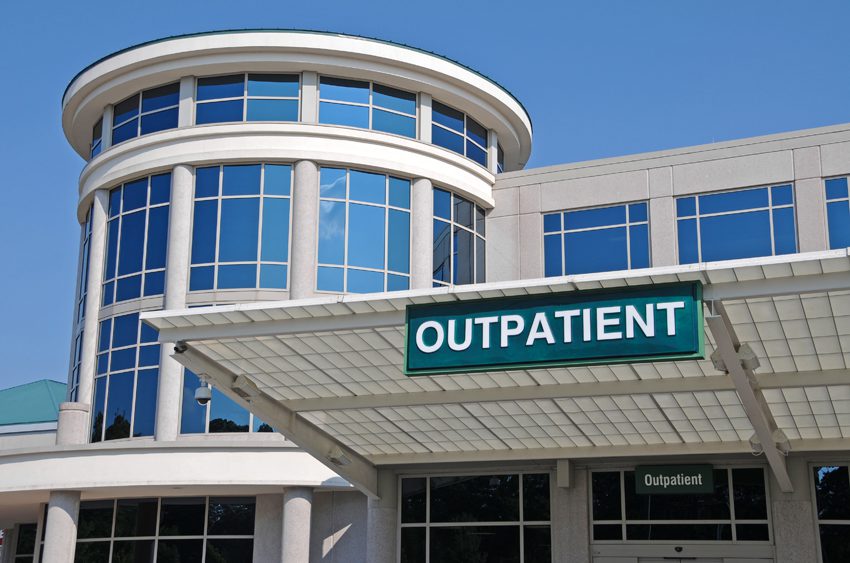 As patients seek care in outpatient settings, hospital inpatient departments are seeing sharp decreases in revenue—a heavy hit to take on top of existing policy-driven financial challenges. Not only are reimbursement policies rewarding providers for treating patients in lower acuity settings, but increased competition in the freestanding clinic market is squeezing hospital margins even more.
As patients seek care in outpatient settings, hospital inpatient departments are seeing sharp decreases in revenue—a heavy hit to take on top of existing policy-driven financial challenges. Not only are reimbursement policies rewarding providers for treating patients in lower acuity settings, but increased competition in the freestanding clinic market is squeezing hospital margins even more.
Big retail chains, like CVS, Target, and Walgreens, have extended their health services beyond vaccinations and basic screenings to include treating minor injuries and illnesses. These urgent care centers and other freestanding provider types are frequently more convenient—offering late night and weekend hours in local shopping centers—and can operate less expensively, since they do not have to support high-acuity emergency rooms. Additionally, many of these new players have a distinct advantage as trusted, consumer-facing brands.
It’s no secret that hospitals and health systems are under pressure to make sense of the value-based care models being encouraged by the CMS and other payers, which has propelled the healthcare merger-and-acquisition movement. However, increased competition has heightened the need for hospitals to address the outpatient volume shift with great haste. Hospitals that are looking to address the outpatient volume shift and correlated drop in revenue can take a two-pronged approach. They can acquire ancillary practices to create a streamlined care pathway, securing revenue that would otherwise be assumed by competing providers, and widen cost-reduction efforts to focus on more efficient care delivery.
While these solutions are typically perceived as belonging to administration and operations, the financial success of both relies heavily on the hospital supply chain. Involving supply chain at the outset of an initiative that spans the continuum of care creates a logical stream of decision-making that helps manage overall costs.
When non-acute practices are acquired, the operating costs of the acquired practice are shouldered by the parent organization. Failure to sync the acquired practice with the health-system supply chain can translate into major differences in contract pricing, purchasing, and distribution methods (to name a few), ultimately increasing operating costs. However, if the discrepancies are reconciled, the potential to avoid unnecessary expenses’as well as to generate immediate savings’is significant. For example, when physicians and surgery centers join health systems, they are often able to qualify for enhanced pricing through the total volume represented by the acute care parent.
It’s also important to make the newly acquired physicians familiar with the system’s utilization and product variation policies. In today’s value-based environment, any investment you make into streamlining operations and eliminating waste from your system goes directly back into the hospital, not the payer. In fact, according to Thomson Reuters, it takes $1,000 worth of new revenue to have the same impact on the bottom line as just a $1 reduction in operating expense.
Under a cost-quality-outcomes—or CQO—approach, the health-system Supply Chain Department acts like the nucleus of a cell, tracking and providing the essential items required by the rest of the specialized divisions. Ideally, the Supply Chain Department leads value-based purchasing and monitors inventory and use data, in addition to managing the Item Master (the health system’s formulary of approved products, pricing, and distribution information). The surrounding departments and affiliated service locations operate based on the purchasing practices defined by the supply chain. The result is a network that operates synergistically to achieve optimal performance that supports a united purpose.
A large part of hospital success in the outpatient-centered landscape depends on the ability to streamline inputs and standardize outcomes across the continuum of care. The supply chain plays a critical role in managing the increased operational complexity created by the outpatient volume shift. Involving your corporate supply chain leaders earlier in the process can help you introduce standardized processes on-site and at the onset of acquisition, enabling you to expedite a positive impact on your bottom line.



Comments are closed.